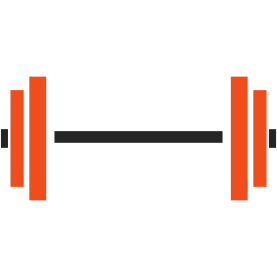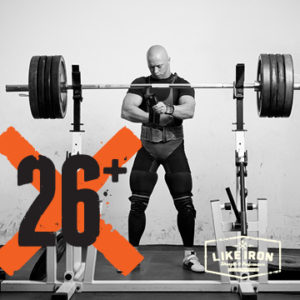I want to inform you that I will be starting an informational series on strength training. I will talk about topics that are currently on my mind and hope to answer any questions you may have. The goal of this content is to be short and sweet, informative, and understandable. I will take relatively complicated training jargon and make it understandable and applicable to your training. The principles we will discuss in this series are universally applicable and relate to all sports. Because I love strength training, and coach and compete in powerlifting, these principles will be applied to this sport. The first topic I want to discuss is something that has been on my mind lately; long term progression in strength training. I want to focus today’s discussion on three training variables that play a role in long term strength progression. Volume, intensity, and frequency. Let me start by defining these variables as they relate to lifting. Volume is defined as sets x reps or hard sets (you may also see volume load in the literature which is sets x reps x load). Absolute intensity is defined as the total weight used in a movement and relative intensity may be defined as a percentage of absolute intensity or a rating of perceived exertion (RPE). Volume and intensity have a relationship and are not necessarily mutually exclusive and are both components of volume load or tonnage (sets x reps x load). I want you to think of volume and intensity as how many and how much of something you are doing. Lastly, frequency is how often a given task is repeated. As you go from an untrained beginner in strength training to a well-trained lifter, it becomes harder and harder to progress and the rate of progression is much slower. How do you continue to see progress when it becomes difficult? Volume, intensity and/or frequency must be manipulated to provide an appropriate stimulus in which the body can adapt and become stronger! Basically, your training must change to keep up with your adaptations over time to continuously progress. This progression must be titrated! Meaning, you should not go from squatting once per week to squatting four times per week instantaneously. Therefore, one must increase the volume, intensity and/or frequency in small increments over time. Volume, intensity, and frequency cannot go up infinitely due to accumulating fatigue and other factors, but this is something we will discuss in the future. The take home message is that training variables volume, intensity and/ or frequency must be manipulated over time to continue to see progress. Not everyone will be able to respond to the same increases in volume, intensity, and frequency so it is a good idea to figure out what works for you through trial and error. If you are local to Bozeman do not forget to swing on by Like Iron Strength and Performance.

Long Term Progression in Strength Training
- likeironfitness@gmail.com
- July 13, 2017
- Uncategorized




